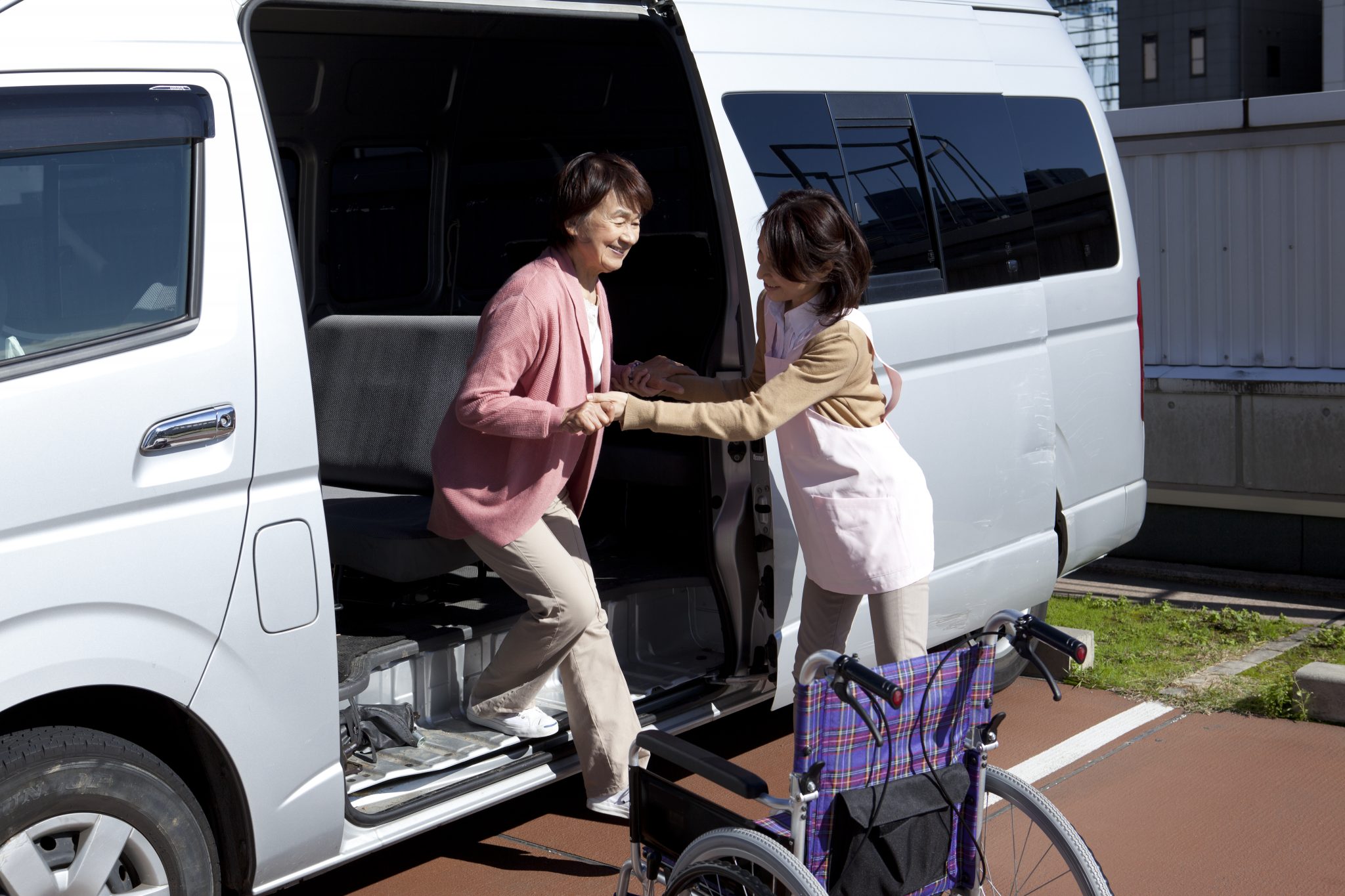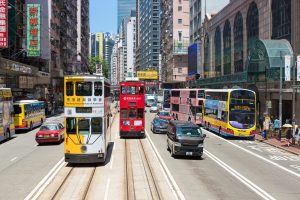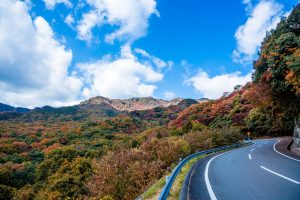Introduction
In early October, Toyota Motor Corporation and SoftBank announced the launch of a new joint venture, Monet Technologies, to develop new mobility services. The impact of the partnership between the two companies, both of which play leading roles in Japan’s economy, has been large, and has been the subject of significant media attention.
Of particular interest to this author as this news was circulating was the fact that regional governments had been mentioned as partners for the new company’s development efforts. This was because, just around the time the two companies were announcing their new partnership, I had just had the fortunate opportunity to make several visits to the island of Shodoshima, in Kagawa Prefecture, and to speak with the locals there about the mobility situation in the area.
With Japan beginning to face the effects of a shrinking and aging population, it is said that local public transportation will begin to face more and more difficulty. In this report, I examine the issues related to local mobility discovered through conversation with the inhabitants of Shodoshima and the scope of the self-driving service necessitated by them.
Shodoshima: A “Little Japan”
Located in the Harima Sea region of the Inland Sea of Japan, Shodoshima is an island with a population of approximately 28,000. Some readers will doubtless recognize it as the famous birthplace of Sakae Tsuboi, the author of the novel “Twenty-Four Eyes.” It has long been known for its production of soy sauces, soy-simmered foods, sesame oil, somen noodles and olive oil, and it is famous for being one of the few places in Japan where each of these items is produced.
The island is also home to a significant tourism industry, and in addition to the autumn leaves of Kankakei Gorge, which are just coming into season now, Instagram-friendly spots such as the Angel Road and the Windmill of the Olive Park make it a popular sightseeing destination for young people as well. Recent years have also seen increasing numbers of visitors to Shodoshima for the Setouchi Triennale, a modern art festival held once every three years.
Even with its healthy local industries, however, Shodoshima faces the same population shrinking and aging issues faced by other rural mountainous and island regions. With the passage of the Remote Islands Development Act by the Ministry of Land, Infrastructure, Transport and Tourism in 2013, island development efforts continue, including the promotion of immigration and settlement, visitation from other regions and local specialty production.
One thing that left an impression on me from my first visit to Shodoshima was the description of the island as a “little Japan” by one of my local industry contacts. The geographical positioning, surrounded by mountains and the sea, the history of development through local production and trading with off-islands and the societal issues looming in the near future with a shrinking and aging population are all characteristics that the small island of Shodoshima shares with Japan as a whole.

Mobility Issues on Shodoshima
During my last visit to the island, I was able to meet with a people from a wide variety of different generations and communities, including those in the public administration sector, the transportation sector, the automotive sector, the logistics sector, industrial organizations, educational institutions, the medical and nursing sector and civil organizations.
The name “Shodoshima,” which could be translated roughly to “Small Bean Island,” suggests that the island is relatively small in size, but in fact, it has an area of about 150 square kilometers, and, like other similar regions, is a place where people generally rely on driving their own cars to get around. “We don’t just have one car per household; we have one per person,” a local told me. To convey the mobility issues faced in the region, here I list some of the items mentioned by the people I met.
Current mobility issues
- Bus routes do not have enough buses running.
- There are not enough drivers available to hire, and businesses have to compete for them.
- With the aging of the population, some people cannot rely on their own cars for transport.
- During peak tourism periods, there is sometimes no room for students on the buses.
- Sightseeing destinations are far apart, and correspondingly adaptable transportation is required.
- Some people return their driving licenses to the government, but people return them at different times in different areas.
- The ferry and bus schedules are not aligned with one another.
I traveled around the island by automobile myself, and in doing so, was able to get an understanding of how far apart the sightseeing spots were and how difficult it would likely be to meet the needs of the whole island using bus lines alone. I was also able to get an appreciation for one of the island’s unique issues: the need to establish smooth links between on-island and off-island transportation.
Hopes and Concerns About Self-Driving Vehicles
That said, what kind of expectations do people have toward self-driving vehicles? Comments I received from some of the people I met showed significant hopes and expectations toward self-driving vehicle technology, including the hope that self-driving vehicles would solve the professional driver shortage, the desire to use self-driving vehicles to address existing social issues, the notion that the introduction of self-driving vehicles could completely revolutionize life on the island by simplifying trips to the hospital and the store and the hope to use self-driving vehicles to transport tourists to their hotels.
At the same time, however, there were also concerns about self-driving vehicles. People with whom I spoke expressed concerns that it is not yet well understood what exactly self-driving vehicles will be able to accomplish and how safe they will be and that there is not enough information available about self-driving vehicle technology.
There were also people who mentioned the actual efforts and vehicle performance characteristics that would be necessary in allowing self-driving vehicles to operate on Shodoshima. Among these were mentions of the need for demonstration runs of self-driving vehicles for island residents to witness, the need to ensure that the infrastructure is capable of supporting such vehicles, the need to ensure that vehicles are capable of dealing with the considerable slopes of the island’s roads and the notion that self-driving “senior cars”(Japanese popular personal mobility for elderly people) could be beneficial for the elderly, giving the impression of increasing momentum toward the actual introduction of the technology to the island.
Considerations on “Service”
One thing I realized while speaking with people from a variety of different generations and communities about self-driving vehicles was that what was needed was more than just the ability to get around with self-driving.
For example, there were elderly people who raised questions such as whether self-driving buses would still have personnel to help passengers on and off and how passengers in wheelchairs would be able to board self-driving vehicles.
With the bulk of the discussion on self-driving vehicles focusing on how they will move and navigate without drivers, these questions suggested a need for a focus on additional services as well, from support for passengers when they enter, exit and are present in the vehicle to support services present at the beginning and end of the trip.
If such needs were fulfilled by placing personnel in self-driving vehicles to help passengers on and off, it is likely that such a service could be made available to elderly and disabled passengers to enable them to get around more freely.
Although it may seem self-evident, there is also another point of significance to making such a service available locally. The service would offer a way to help stem the flow of people moving away from the island. There are cases in which elderly residents have moved away from Shodoshima to other places where their families live because they are no longer able to drive or because living on their own is inconvenient in other ways.
Making it possible for the elderly to get around freely would reduce the number of people leaving this island on which they were born and raised and would inspire some who have already left to feel at ease about returning. The ability to get around freely would lead to an increased ability to participate in society and improve the revitalization of people and communities. It is possible that a service capable of enabling free movement and solving mobility issues in the region could also be a key to the regional community’s sustainability into the future.

In Conclusion
This paper has provided an introduction to the island of Shodoshima, touched on the mobility issues and hopes and apprehensions about self-driving vehicles, as encountered in my conversations with the people I met, and introduced an idea about the type of service that will be needed with these in mind.
In talking with these people from a variety of different generations and communities, I was reminded that, just as implied by the term “MaaS” (“Mobility as a Service”), a self-driving vehicle service must be considered as not only a means to get from point A to point B but as a comprehensive package that includes the needed support at each stop for passengers getting on and off, access to other means of travel, fare payment and transit and sightseeing information.
In rural areas, the level of bus service is worsening due to driver shortages and abandonment of unprofitable routes. Neither of these issues can be solved in a single day, but it will be important to continue to follow the above-mentioned Monet Technologies to see what kind of new mobility services the company begins to develop in rural areas.
I imagine that the issues I saw on Shodoshima, the “little Japan,” are present to varying extents in other regions as well. It is my hope to utilize the expectations and opinions that were shared with me here about self-driving vehicle technology to work to promote the introduction of self-driving vehicle services that seriously take into account, and are designed based on, the needs of their would-be users, and that will be welcomed by local communities.














